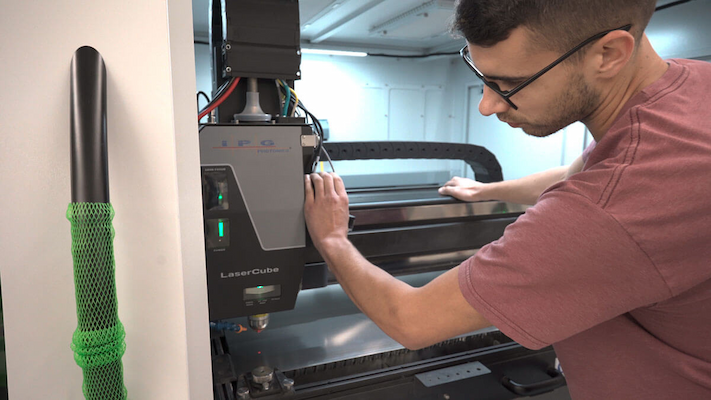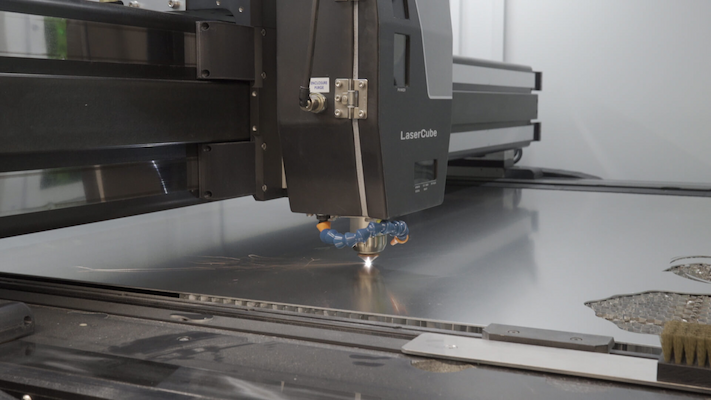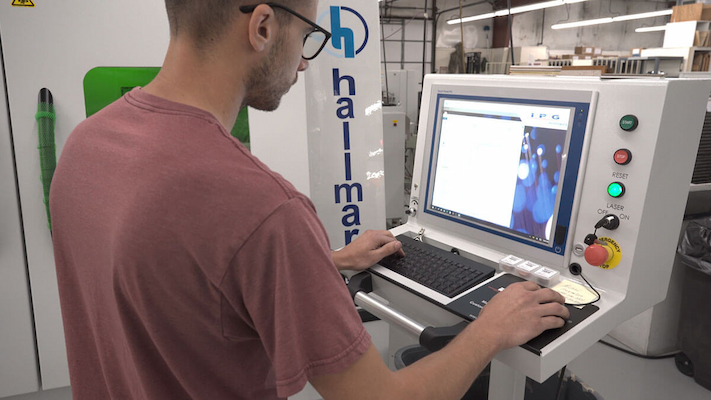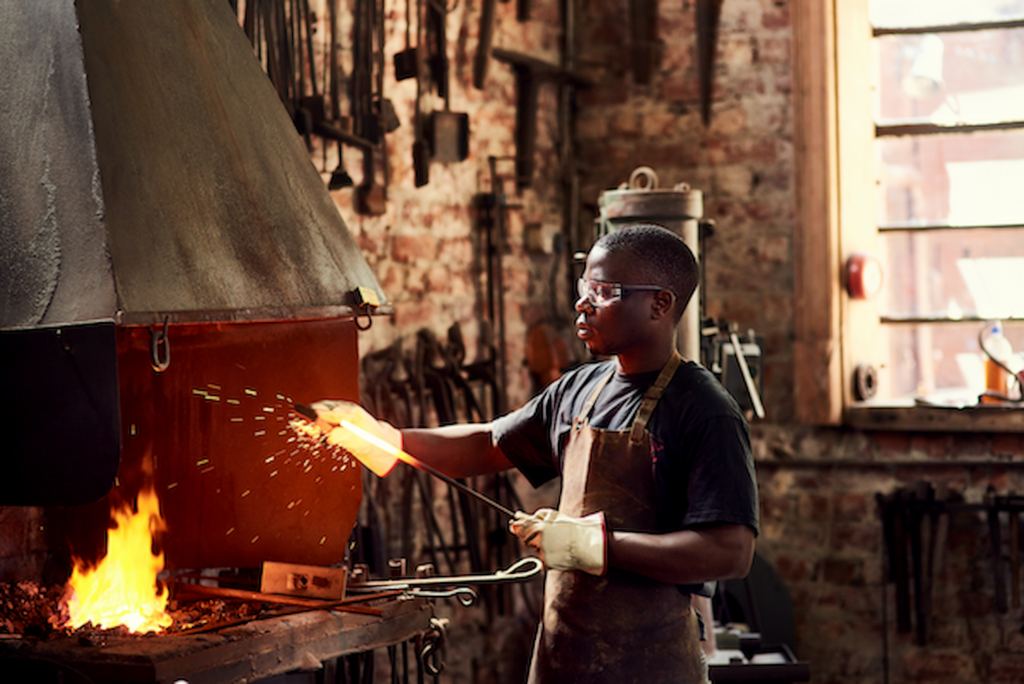In today’s fast-paced world, cutting-edge technology is the driving force behind progress and innovation. From the software that streamlines day-to-day operations to the cutting-edge machinery that manufactures products, businesses must adapt to the ever-evolving technological landscape to stay competitive and thrive.
Embracing the right technology not only boosts efficiency, but also offers cost savings, time optimization, and enhanced collaboration among partners. For the metal fabrication industry, where precision, quality, and speed are paramount, staying ahead of technological advancements is not just an advantage but a necessity.
In this blog, we delve into the remarkable evolution and impact of technology in the metal fabrication industry.
How Metal Fabrication Has Changed Over The Years

Throughout history, metal has played a crucial role in shaping human civilization. From ancient times to the modern era, it has been an essential element in various aspects of our lives. The journey of metal fabrication has revolutionized the way we live and interact with the world around us.
Initially used for survival and warfare, people fabricated swords, arrowheads, spears, and shields out of metal. With advancements in manufacturing techniques, metal’s uses expanded exponentially. It later found applications in construction, electronics, transportation, and more.
A full understanding of metal cutting and forming techniques became essential to meet the increasing demands of an ever-changing and developing society. Skilled metal workers combined traditional craftsmanship with cutting-edge technology to create intricate and functional metal products.
Today, metal fabrication continues to be in high demand, driving innovation and progress, and leaving an enduring impact on humanity’s story.
Technology’s Impact On Metal Fabrication
Technology has undeniably revolutionized the landscape of metal fabrication, ushering in a new era of efficiency, precision, and innovation. From the earliest days of manual blacksmithing to the advanced computer-controlled processes of today, technology’s impact on metal fabrication is profound and far-reaching.
- Automation and Robotics: Robots perform intricate tasks with precision, speeding up processes like welding and cutting while improving worker safety.
- CAD/CAM Software: Computer-aided design and manufacturing software refines metal designs, simulates processes, and optimizes production efficiency.
- Precision Machining: CNC machines achieve high-quality metal parts with tight tolerances, reducing waste and enhancing precision.
- Laser Cutting and Waterjet Technology: Laser cutting and waterjet methods enable accurate metal shaping without heat distortion.
- Additive Manufacturing (3D Printing): 3D printing creates intricate metal structures, allowing customization and rapid prototyping.
- Materials Innovation: Advanced alloys with improved properties expand application possibilities in metal fabrication.
- Real-time Monitoring and Data Analytics: Monitoring fabrication processes in real-time optimizes efficiency and detects issues through data analysis.
- Supply Chain Management: Digital communication enhances coordination among suppliers, manufacturers, and customers, reducing lead times and costs.
- Sustainability and Energy Efficiency: Eco-friendly practices like green welding and sustainable sourcing address environmental concerns in metal fabrication.
As technological innovations continue to evolve, metal fabrication processes will likely become even more sophisticated, opening up new opportunities and challenges for professionals in the field.
The Cutting Edge Technology of Modern Metal Fabrication
In today’s rapidly evolving world, industries are continuously exploring innovative ways to enhance productivity and efficiency. The metal fabrication sector is no exception to this trend, as it embraces cutting-edge technologies like automation, robotics, 3D printing, and digitization to revolutionize its processes.
These advancements not only improve manufacturing capabilities, but also address challenges posed by labor shortages, environmental concerns, and the need for increased customization.
Automation and Robotics Create Efficiency

The integration of machine learning, AI, advanced robotics, and automation systems has transformed the metal fabrication landscape. These technologies complement the human workforce by working 24/7, thereby maximizing production output. Routine maintenance ensures that these machines operate indefinitely, allowing the industry to meet growing demands efficiently.
Automation has streamlined the production process. Clients now have the convenience of ordering various metal parts digitally. The factory system prints these parts, packages, checks, and delivers them, significantly reducing the risk of human error. Moreover, collaborative robots (cobots) have emerged as a game-changer, working safely alongside human workers to tackle dangerous or monotonous tasks. This approach is helping to offset the labor shortage, which has been exacerbated by the COVID-19 pandemic.
3D Printing and Manufacturing Unleash Creativity
3D printing, also known as additive manufacturing, has proven to be an incredibly versatile tool across various industries, including metal fabrication. It empowers fabricators to achieve a new level of customization that was previously challenging with traditional manufacturing methods.
Metal powder bed fusion is one such additive manufacturing method that enables the creation of complex designs with minimal waste. Unused powder can be recycled and reused, making it a greener and more efficient option for metal fabrication. 3D printing has transformed how metal parts, casting molds, and prototypes are produced, allowing for faster and more cost-effective manufacturing.
Green Practices Improve Sustainability
The metal fabrication industry is making significant strides towards greener practices, driven by precision manufacturing techniques, 3D printing, and other technological advancements. These practices optimize energy use and minimize waste generation, contributing to a more sustainable manufacturing process.
Implementing green initiatives not only aligns with environmental goals but also addresses the increasing demand for steel and other metal products. Remanufacturing materials and embracing more eco-friendly processes strike a vital balance in the industry, promoting responsible resource consumption.
CNC Machines Empower Workers

Computer numerical control (CNC) machines have long been a critical component of metal fabrication, requiring human intervention and programming to operate. However, automation has now been incorporated into CNC processes, eliminating repetitive tasks and enhancing efficiency.
Automating CNC processes not only increases productivity but also reduces the risk of employees developing repetitive stress injuries. This empowerment of the workforce opens up better growth opportunities and fosters a more fulfilling work environment.
Digitization Boosts Efficiency
While many industries have rapidly adopted digitization, metal fabrication has been relatively slow to embrace this transformative trend. However, digitization should not be misunderstood as replacing human workers. Instead, it aims to enhance efficiency and productivity without compromising the human factor.
The integration of digitized technology enables metal fabrication businesses to optimize their operations, streamline processes, and respond to customer demands more effectively. As the industry moves forward, business owners must embrace digitization and invest in cybersecurity measures to protect against potential threats.
Leverage Hallmark Nameplate’s Cutting-Edge Metal Fabrication Technology
The metal fabrication industry is undoubtedly at the forefront of technological advancement. These innovations not only boost efficiency and productivity but also address labor shortages and environmental concerns.
BUT, as metal fabrication companies continue to embrace these technological marvels, they must remember that despite the digital revolution, human expertise remains essential. Striking a balance between automation and human intervention is the key to unlocking the industry’s true potential.
At Hallmark Nameplate, we have the perfect blend of automation and human expertise to ensure the utmost quality. While some big companies have opted to go fully automated, we know that it is our people who can collaborate with our customers to make customized metal fabrication.
Our latest addition, the IPG Photonics LaserCube, enhances our capabilities with intricate and decorative custom designs. With 2 kW average power and 4 kW max peak power, we can expand metal fabrication thickness, including stainless steel.
Ready to see the possibilities? Request a demo for any intricate custom design. Let’s bring your ideas to life!




